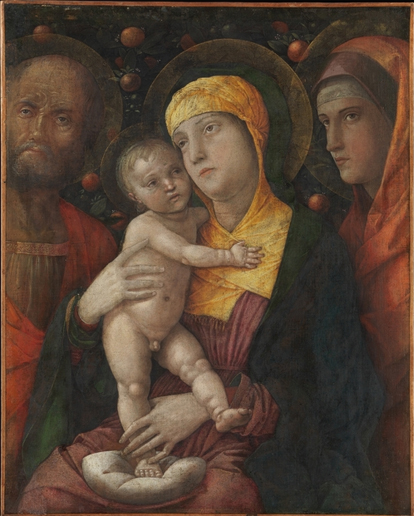VASARI tells us that Andrea Mantegna ''was so kind and lovable that he will always be remembered'', but not everyone found him memorable for those reasons. Certainly not Simone Ardizzone da Reggio, a printmaker briefly under Mantegna's direction who made the mistake of taking on some additional work without his consent. First, Mantegna had him threatened; then the capo di tutti capi of the Mantuan art world sent a dozen armed men to assassinate him; when they failed, he attempted to have him arrested on trumped-up charges of sodomy. Simone fled to Verona and subsequently kept a safe distance between himself and the first painter to the court of the Gonzagas.
Mantegna left his own, memorable image of himself in the form of the bronze bust that adorns his mau-soleum in Mantua. A painted plaster cast of it is the first thing that you see in the Royal Academy's sporadi-cally marvellous exhibition of Mantegna's paintings, prints and drawings. Exhibit One, it hints at just about everything in his character that you might choose to find revealed in his art. Wreathed with laurel, Mantegna confronts you in the guise of a Republican senator or Stoic philosopher, although there is also something disturbing in the stern twist of his features.
Mantegna was a hard man and he painted a hard, hard world. No painter of sacred subjects, before or since, has created a vision of man and nature so thoroughly devoid of optimism. It makes its first appearance in the earliest attributed picture in this show, the panel of St Jerome in the Wilderness of around 1448-9. The landscape that surrounds the saint in his cave is punctuated by sharp rocky extrusions like knives thrust up through the skin of the earth. Violence lurks in this petrified world: Mantegna, whose obsession with...


